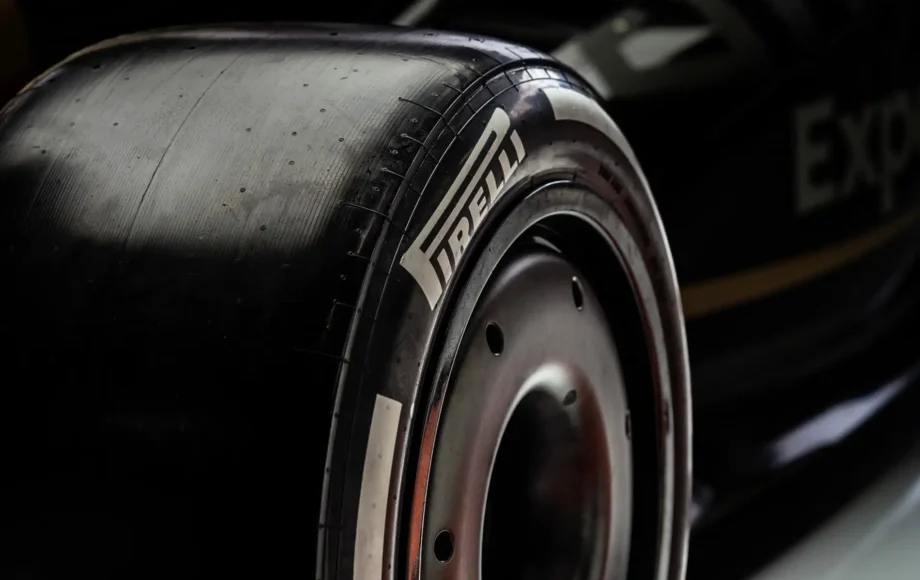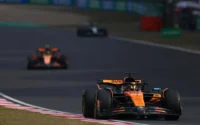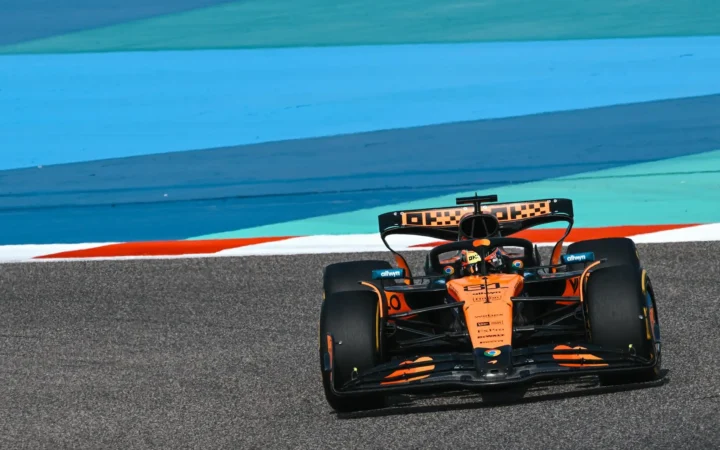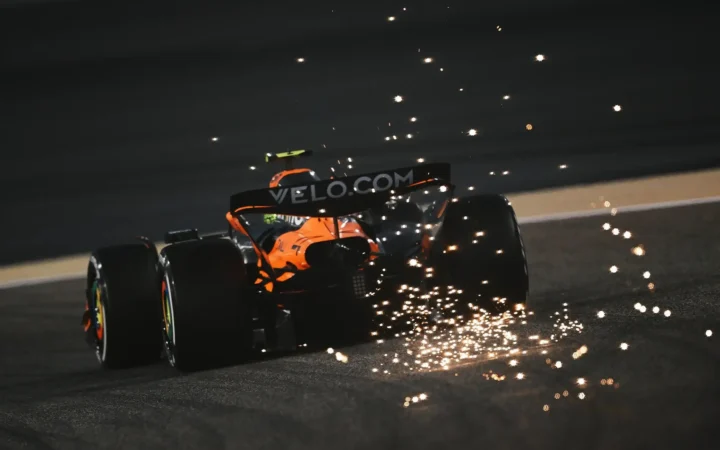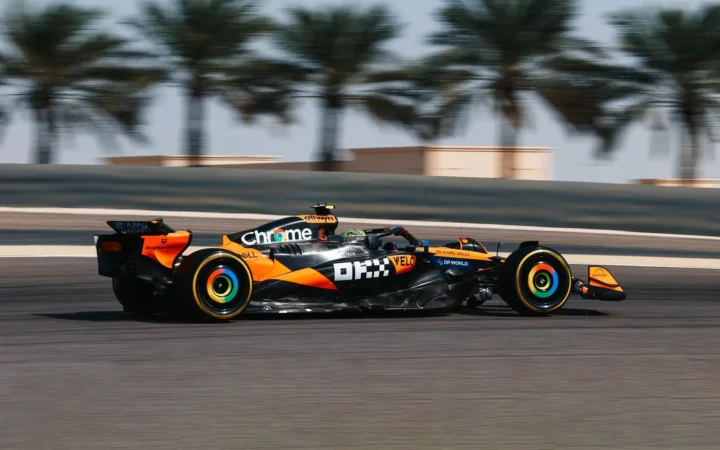Featuring

Formula 1 is at the pinnacle of motorsport and has always demanded cars to be equipped with cutting-edge technology. Tyres are among those components, and since 2011, Pirelli has played a significant role as the exclusive tyre supplier to F1.
In this guide, we look into the history of Pirelli tyres in F1, looking at their first entry into the sport up to the brand’s involvement today.
A brief introduction to Pirelli
If you’ve owned a road car or are interested in motorsports, you will undoubtedly have heard of the Italian brand Pirelli. Founded in Milan in 1872 by Giovanni Battista Pirelli, the company initially manufactured rubber products, eventually seeing an opening in the tyre industry when transport began to take off.
It wasn’t long until Pirelli quickly gained a reputation for innovation and quality in tyre design, becoming a prominent tyre manufacturer on a global scale. By the mid-20th century, Pirelli had established itself as a leading tyre brand known for its high-performance tyres on the road and track.
Pirelli’s history in Formula 1
While Pirelli has been the sole supplier since 2011, its involvement in Formula 1 is not a recent development. The company has a long history in the sport, dating back to the first season where Pirelli tyres debuted in 1950, the same year the Drivers’ Championship was established.
During the initial seasons, Pirelli enjoyed great success, with F1 drivers like Juan Manuel Fangio and Alberto Ascari using their tyres to secure multiple world championships. However, by the mid-1950s, Pirelli withdrew from Formula 1 due to financial constraints and increasing competition from Dunlop, Firestone, and Englebert tyres. The company shifted its focus to other motorsport categories and continued to innovate tyres for road-going cars.
Pirelli’s return in 2011
Pirelli returned to Formula 1 in 2011, taking over as the only supplier from Bridgestone, which had continued in F1 after Michelin, in their duel role, withdrew after the 2006 season. The return was part of a broader strategy by Formula 1’s governing body, the Fédération Internationale de l’Automobile (FIA), to maintain a single tyre supplier to reduce costs and evenly spread the competition up and down the grid.
Chosen as the exclusive F1 tyre supplier for the sport, Pirelli signed an initial three-year contract that was extended multiple times. The Italian tyre manufacturer has embraced the challenges from the FIA, teams, and drivers and has continued to provide tyres that meet the demand for increased car performance and sweeping rules changes.
Challenges faced by Pirelli
Formula 1 is a unique motorsport in terms of tyre requirements. The cars are incredibly fast, generate high levels of downforce, and subject the tyres to immense stresses. This creates several challenges for a tyre manufacturer, and it’s not unheard of for the FIA to request changes midway through a season to feature in the following. This involves test days with the teams, intense R&D work and vast amounts of money. The trade-off is that Pirelli can filter these technologies down to road-going tyres and own the prestige of an advertisement within a global sport.
Tyre degradation
One of the most notable changes the FIA asked Pirelli to introduce was the concept of high tyre degradation (deg). This requires the design of the tyres to degrade quickly to increase the strategic games of races, forcing teams and drivers to manage their tyre usage throughout a race. This added element of unpredictability means that teams’ strategists must decide when to pit for fresh tyres, when to push the car, on which tyre compounds, and how long they can extend a stint, leading to more exciting races.
Balancing performance
But, with tyre deg, Pirelli has had to strike a delicate balance between durability and performance. While the FIA dictates the rules, teams require tyres that can withstand not only the speed and downforce they put through their cars but the rigours of a Grand Prix, from abrasive track surfaces to smooth while still providing enough grip for competitive racing. It’s an engineering conundrum for the manufacturer.
Varying track conditions
As a global sport, F1 takes place on circuits worldwide, each with unique characteristics. From street circuits to purpose-built tracks. Pirelli has had to develop a range of tyres capable of performing well in this wide range of conditions, from the scorching heat of the Middle East to the often rain-soaked tarmac of Silverstone.
Pirelli’s contribution to Formula 1
When Pirelli returned to Formula 1 in the first season, they continued where Bridgestone had left off, but that sooner changed with the FIA, teams and Pirelli agreeing to bring several significant changes to the sport.
Pirelli introduced five different tyre compounds on a sliding scale from softest to hardest, each with a certain characteristic. These compounds feature colours, so when you see them on track you know that the softest is the red-banded tyre and the hardest is the white-banded tyre, yellow sits in the middle as the medium tyre. While the FIA and Pirelli will choose which three compounds on the sliding scale to bring to a race, it is still down to the teams to select the most appropriate tyres for race strategies and track conditions.
Pirelli’s return to Formula 1 has seen many new records broken. The FIA’s goal of reducing the supplier down to one has increased the reliability of tyres in the sport, with numerous records and achievements broken since their return.
Evolution of Pirelli tyres in Formula 1
As the exclusive tyre supplier, Pirelli continues to evolve its tyre technology to meet Formula 1’s changing demands. The company regularly introduces new tyre compounds and constructions to keep up with the sports governing bodies’ requests.
Wider tyres
In 2017, Formula 1 underwent a significant rule change that introduced wider tyres. Pirelli developed a new range of tyres featuring wider front and even wider rear tyres for increased grip and performance. The wider tyres not only improved lap times but also contributed to the sport’s visual appeal and safety with more rubber in contact with the track.
The 18-Inch era
Another significant change came in 2022 when Formula 1 had sweeping rule changes, with one of those transitioning to 18-inch tyres, replacing the traditional 13-inch. This shift was aimed at aligning Formula 1 with road car technology and making the sport more relevant to tyre manufacturers. Pirelli played a central role in developing the new 18-inch tyres, which required extensive testing and development.
Pirelli’s role in motorsport sustainability
In recent years, sustainability has become a key focus in motorsport. Pirelli has actively contributed to this shift by developing tyres that are more environmentally friendly. The company has worked on reducing the environmental impact of its tyres through various initiatives, including:
Sustainable materials
Pirelli has explored using sustainable materials, including natural rubber and bio-sourced materials, in tyre production. This reduces the tyres’ environmental footprint and aligns with broader sustainability goals in the automotive industry.
Reduced carbon emissions
Pirelli has also been working to reduce the rolling resistance of its tyres, which can contribute to lower fuel consumption and reduced carbon emissions. This aligns with Formula 1’s commitment to sustainability and its goal of becoming a more eco-friendly sport with net-zero goals in mind by 2030.
Recycling programs
Another big question for Pirelli is how to implement tyre recycling programs, allowing used tyres to be repurposed for various applications rather than discarded. F1 tyres are never used again once they have degraded or been discarded by the team. This approach reduces waste and promotes a more circular economy for tyres.
Pirelli’s future in Formula 1 today
Pirelli’s history in Formula 1 is a story of innovation, challenges, and success. From its early involvement in the sport to its return in 2011 and the ongoing evolution of its tyre technology, Pirelli remains at the heart of F1. The company’s commitment to performance, strategy, and sustainability has ensured that Pirelli tyres will remain a central component of Formula 1 as it shifts to net zero and as the teams and drivers continue to push the boundaries of technology and performance.
Seen in:

